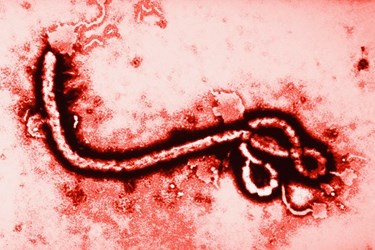Ebola Test From J&J's Janssen Earns FDA Emergency Use Authorization

The FDA has issued emergency use authorization (EUA) for Johnson & Johnson (J&J) subsidiary Janssen’s real-time diagnostic device indicated for the Ebola Zaire virus, which was responsible for the 2014 outbreak in West Africa. Using only a few drops of blood, the device can deliver results in less than two hours, and its cartridges are designed for easy transit and safe disposal.
The outbreak of Ebola in West Africa has claimed the lives of over 11,000 people since beginning in March of 2014, but has slowed considerably in recent months. The World Health Organization (WHO) recently announced that the Republic of Guinea — one of three countries most affected by the outbreak — had been free from Ebola transmission for over 42 days. Infectious disease experts have emphasized the need for heightened surveillance to detect new cases before they have a chance to spread.
On Aug. 4, 2014, the secretary of the U.S. Department of Health and Human Services (HHS) issued a determination that justified the emergency use of in vitro diagnostic devices capable of detecting the Ebola virus. Until that decision is revoked, devices meeting criteria outlined by the HHS may be made clinically available in U.S. laboratories without the rigorous application process required for traditional FDA approval.
Since 2014, ten medtech companies have received EUAs from the FDA for devices that could quickly and accurately diagnose Ebola, and many of these use a real-time reverse transcription polymerase chain reaction (rRT-PCR) system. Roche received an EUA last year for LightMix, and Cepheid introduced a point-of-care system with an available Xpert Ebola Assay.
The most recent addition is Janssen’s rRT-PCR system, the Idylla Ebola Virus Triage Test, which was co-developed with Biocartis NV and the Belgium Institute of Tropical Medicine. Janssen Medical Director Theresa Pattery told the Philadelphia Inquirer that the device requires only a few drops of blood from patients, and takes approximately 100 minutes to distinguish between Ebola and other diseases that present with similar symptoms.
Janssen noted in a press release that the sample cartridges do not require cold-chain reagent storage and can be easily decontaminated before disposal. The test is available for use in U.S. laboratories and similarly qualified non-US laboratories where personnel have received training on the use of the Idylla system. According to Janssen, training required for the Idylla is minimal.
“We are very pleased that the FDA has granted Emergency Use Authorization for the Idylla Ebola Virus Triage Test,” commented Jorge Villacian, CMO of Janssen Diagnostics. “Across J&J, we are mobilizing our resources and expertise to help prevent another outbreak of Ebola.”
Because of difficulty in obtaining samples from patients with the Ebola virus, the Idylla test and many of its competitors have only been tested with lab-engineered specimens and not humans. In 2015, Harvard researchers studied the use of both traditional rRT-PCR tests and Corgenix’s ReEBOV antigen rapid test in West Africa.
In a study published in the Lancet, researchers noted that the rRT-PCR tests are an imperfect benchmark in the field, and more testing is required to determine the efficacy of these tests in patients still in the early stages of the disease. Janssen noted similar limitations for Idylla in its press release.
